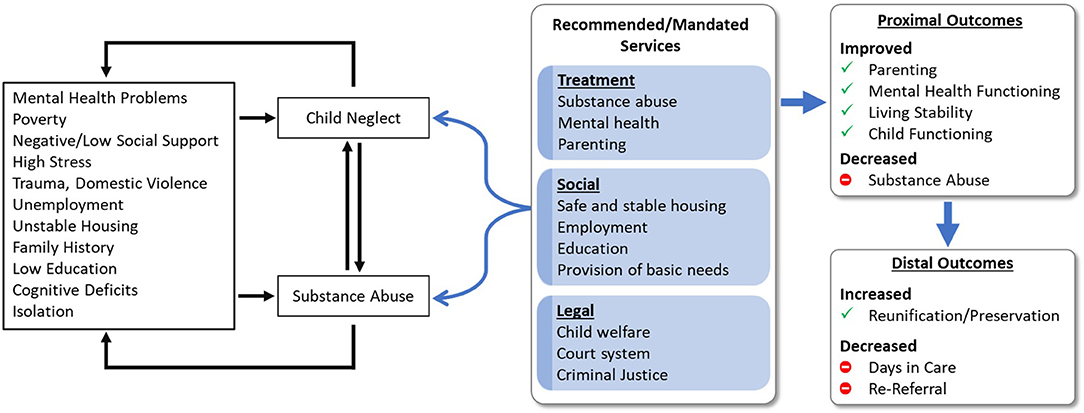Report on Global Research Trends and Sustainable Development Goals in HIV-Associated Kaposi’s Sarcoma (HIV-KS)
Introduction
Human immunodeficiency virus (HIV) remains a critical global health challenge, contributing to significant morbidity and mortality worldwide. By the end of 2023, approximately 39.9 million people were living with HIV (PLWH), with 42.3 million deaths attributed to the virus. Despite advances in combination antiretroviral therapy (cART), comorbidities such as AIDS-defining cancers, particularly Kaposi’s sarcoma (KS), continue to pose serious health risks. KS incidence is notably higher among PLWH due to immunosuppression and is strongly linked to Kaposi’s sarcoma-associated herpesvirus (KSHV).
In 1994, KSHV was identified as the etiological agent of KS. Epidemiological data from 2022 indicate over 35,000 new KS cases and more than 16,000 deaths globally, with a disproportionate burden in Africa. The transmission of KSHV primarily occurs via sexual and bloodborne routes, contributing to its prevalence among PLWH. Understanding the HIV-KS relationship is essential for developing effective prevention and treatment strategies, aligning with Sustainable Development Goal (SDG) 3: Good Health and Well-being.
Bibliometric analysis, employing tools such as CiteSpace, facilitates the systematic evaluation of scholarly outputs to map research trends and collaborations. This study utilizes bibliometric methods to investigate global research patterns in HIV-KS over the past decade, supporting SDG 9: Industry, Innovation, and Infrastructure, by promoting scientific innovation and knowledge dissemination.
Methods
Data Collection and Processing
Data were retrieved from the Web of Science Core Collection (WOSCC) using comprehensive search terms related to HIV and Kaposi’s sarcoma, covering publications from January 1, 2011, to December 31, 2024. Only English-language articles and reviews were included, excluding conference proceedings and other non-peer-reviewed materials. After removing duplicates and irrelevant records, 1,568 articles formed the final dataset.
Bibliometric and Visualization Analysis
CiteSpace software (version 6.4.R1) was employed for data analysis. Key bibliometric indicators included publication counts, co-authorship networks, citation analysis, and keyword co-occurrence. Metrics such as modularity (Q) and centrality were used to evaluate cluster quality and node importance. Visualization of collaboration networks and research themes provided insights into the structural and thematic evolution of HIV-KS research, contributing to SDG 17: Partnerships for the Goals.
Results
Annual Publication Trends
Analysis revealed fluctuating publication volumes in HIV-KS research over the past decade, reflecting shifts in scientific priorities and treatment advances. The trend underscores the need for renewed innovation and research focus to address persistent challenges in KS management.
Geographical and Institutional Contributions
The United States leads global HIV-KS research output, followed by Italy and the United Kingdom. Top institutions include the National Institutes of Health (NIH), University of California System, and Assistance Publique Hopitaux Paris. Collaboration networks highlight the central role of these countries and institutions, though disparities exist, particularly the underrepresentation of high-burden regions such as sub-Saharan Africa. Addressing these inequities aligns with SDG 10: Reduced Inequalities.
Authorship and Citation Networks
- Key authors such as Denise Whitby and Yuan Chang have significantly influenced the field through prolific publications and high citation impact.
- Co-authorship networks reveal collaboration clusters with limited bridging between basic science and clinical research, indicating opportunities for enhanced interdisciplinary integration.
Citation and Reference Analysis
Highly cocited references emphasize the role of HIV-induced immunosuppression in KS pathogenesis and the importance of KSHV latency genes. These foundational studies support ongoing efforts to optimize treatment strategies, including immune restoration and viral suppression, contributing to SDG 3.
Journal and Interdisciplinary Research
HIV-KS research spans molecular biology, immunology, clinical medicine, dermatology, and dentistry, highlighting the importance of interdisciplinary approaches to innovation and improved patient outcomes.
Keyword Analysis and Research Hotspots
- Epidemiology and Prevalence: Focus on seroprevalence and risk factors, especially in high-risk populations such as men who have sex with men (MSM).
- Basic Mechanisms: Investigation of viral oncogenes, immune evasion, and signaling pathways involved in KS development.
- KSHV-Related Diseases: Study of associated conditions including primary effusion lymphoma and multicentric Castleman disease.
- Treatment Strategies: Evaluation of antiretroviral therapy, chemotherapy agents like pegylated liposomal doxorubicin (PLD) and paclitaxel, and management of immune reconstitution inflammatory syndrome (IRIS).
Discussion
Research Landscape and Collaboration
The bibliometric analysis reveals a mature but fragmented research landscape with dominant contributions from high-resource countries. Enhanced global collaboration and equitable partnerships are essential to address research gaps and improve health outcomes in high-burden regions, supporting SDG 3 and SDG 10.
Research Hotspots and Frontiers
- Epidemiological Surveillance: Monitoring KS prevalence and seroprevalence to inform targeted interventions.
- Diagnostic Innovations: Development of rapid, cost-effective diagnostic methods such as ColdSHOT for point-of-care use.
- Therapeutic Advances: Exploration of novel drug combinations, nanotechnology-enhanced chemotherapy, and emerging treatments like electrochemotherapy and laser therapy.
- Vaccine Development: Emphasis on KSHV vaccine research to prevent KS, aligning with SDG 3.
Challenges and Future Directions
Key challenges include disparities in research capacity, limited local leadership in endemic regions, and the need for integrated, multidisciplinary approaches to pathogenesis and treatment. Prioritizing equitable funding, capacity building, and translational research will accelerate progress and contribute to achieving SDG 3, SDG 9, and SDG 17.
Conclusion
This comprehensive bibliometric report highlights the current state and evolution of HIV-KS research, emphasizing the critical role of global collaboration and innovation in addressing this public health challenge. Aligning research priorities with Sustainable Development Goals—particularly SDG 3 (Good Health and Well-being), SDG 10 (Reduced Inequalities), SDG 9 (Industry, Innovation, and Infrastructure), and SDG 17 (Partnerships for the Goals)—is essential to advance equitable prevention, diagnosis, and treatment strategies for HIV-associated Kaposi’s sarcoma worldwide.
1. Sustainable Development Goals (SDGs) Addressed or Connected
- SDG 3: Good Health and Well-being
- The article focuses on HIV/AIDS and Kaposi’s sarcoma (KS), highlighting challenges in prevention, treatment, and research of infectious diseases and associated cancers.
- It addresses global health threats, particularly in high-burden regions such as sub-Saharan Africa.
- It discusses treatment strategies including antiretroviral therapy (ART) and chemotherapy for KS.
- It emphasizes the need for improved diagnostics, therapeutics, and equitable healthcare access.
- SDG 10: Reduced Inequalities
- The article highlights disparities in research capacity and healthcare between high-resource countries (e.g., USA) and high-burden, resource-limited regions (e.g., sub-Saharan Africa).
- It calls for equitable collaborations, capacity building, and inclusion of endemic regions in research and publication.
- SDG 9: Industry, Innovation, and Infrastructure
- Emphasizes the importance of research infrastructure, technological innovation (e.g., new diagnostic methods, nanotechnology in drug delivery), and integrated databases for advancing HIV-KS research.
- SDG 17: Partnerships for the Goals
- Highlights the need for global research collaborations, partnerships between institutions, and interdisciplinary approaches to accelerate progress in HIV-KS research.
2. Specific Targets Under Identified SDGs
- SDG 3: Good Health and Well-being
- Target 3.3: By 2030, end the epidemics of AIDS, tuberculosis, malaria, and neglected tropical diseases and combat hepatitis, water-borne diseases, and other communicable diseases.
- Target 3.8: Achieve universal health coverage, including access to quality essential health-care services and access to safe, effective, quality, and affordable essential medicines and vaccines for all.
- Target 3.b: Support the research and development of vaccines and medicines for communicable and non-communicable diseases that primarily affect developing countries.
- SDG 10: Reduced Inequalities
- Target 10.2: Empower and promote the social, economic, and political inclusion of all, irrespective of age, sex, disability, race, ethnicity, origin, religion, or economic or other status.
- Target 10.c: Reduce to less than 3% the transaction costs of migrant remittances and eliminate remittance corridors with costs higher than 5%.
- (Implied) Promote equitable access to research opportunities and healthcare services.
- SDG 9: Industry, Innovation, and Infrastructure
- Target 9.5: Enhance scientific research, upgrade the technological capabilities of industrial sectors in all countries, particularly developing countries.
- SDG 17: Partnerships for the Goals
- Target 17.6: Enhance North-South, South-South, and triangular regional and international cooperation on and access to science, technology, and innovation.
- Target 17.8: Fully operationalize the technology bank and science, technology, and innovation capacity-building mechanism for least developed countries.
3. Indicators Mentioned or Implied to Measure Progress
- SDG 3 Indicators
- Prevalence and incidence rates of HIV and Kaposi’s sarcoma (e.g., number of people living with HIV, incident KS diagnoses, KS-related deaths).
- Standardized Incidence Ratio (SIR) of KS among people living with HIV.
- Coverage and effectiveness of antiretroviral therapy (ART) and chemotherapy treatments.
- Mortality rates related to HIV-KS and immune reconstitution inflammatory syndrome (IRIS).
- Access to diagnostics and treatment innovations (e.g., use of point-of-care DNA extraction methods, new therapeutic agents).
- SDG 10 Indicators
- Representation of authors and institutions from high-burden, resource-limited countries in research publications.
- Collaboration network density and centrality metrics indicating equitable partnerships.
- Funding allocation and capacity-building initiatives in low- and middle-income countries.
- SDG 9 Indicators
- Number and quality of research outputs involving technological innovations (e.g., nanotechnology in drug delivery, new diagnostic tools).
- Establishment of integrated databases and innovation centers.
- SDG 17 Indicators
- Number and strength of international and interdisciplinary research collaborations.
- Co-authorship and co-citation network metrics (e.g., centrality, modularity) reflecting partnership effectiveness.
4. Table: SDGs, Targets and Indicators
| SDGs | Targets | Indicators |
|---|---|---|
| SDG 3: Good Health and Well-being |
|
|
| SDG 10: Reduced Inequalities |
|
|
| SDG 9: Industry, Innovation, and Infrastructure |
|
|
| SDG 17: Partnerships for the Goals |
|
|
Source: frontiersin.org







